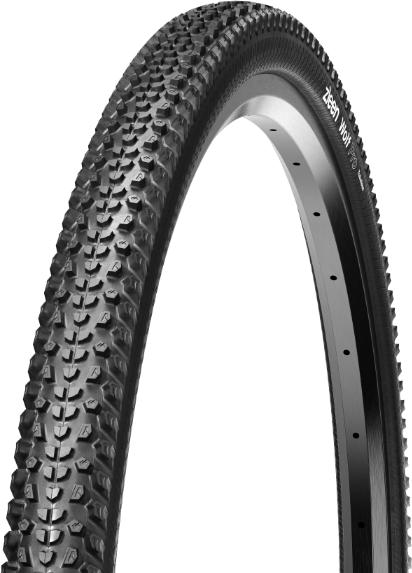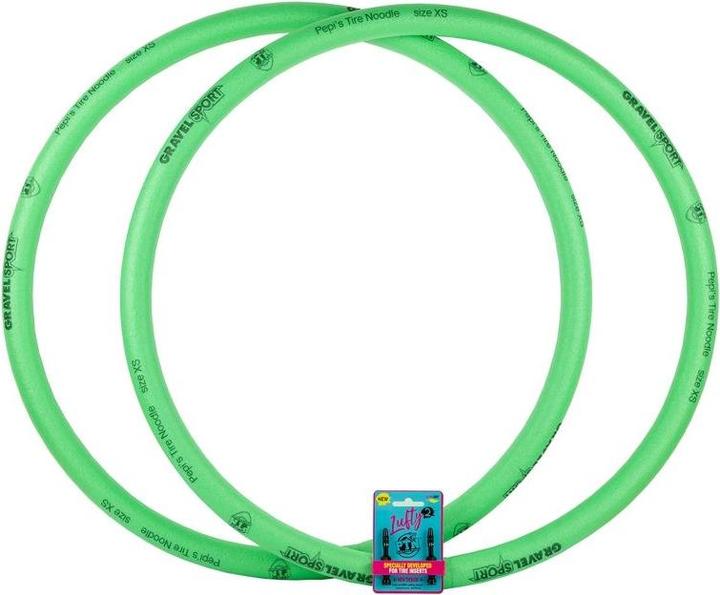

Tubed or tubeless? I’m actually Team Tubeless, but…
While some cyclists swear by tubed tyres, others go for tubeless and tubeless alone. So, who’s right? Like so many things in the world of cycling, this is a crucial question. My opinion? Honestly, I don’t even know.
For cyclists, the question of whether to go for tubed or tubeless tyres is a fundamental one. It’s as crucial as deciding between an e-bike and a push bike, mechanical and electronic shifting or oiling and waxing your chain. In fact, the list goes on and on. I recently had to give my bike yet another retrofit. Tube out, sealing fluid in. And for the first time, a (watch out, here’s the next thing that’ll get people’s knickers in a twist) Tire Noodle came into the mix (website in German).
These plastic foam inserts are available in numerous colours, slightly resembling the brightly coloured noodles used for swimming lessons.
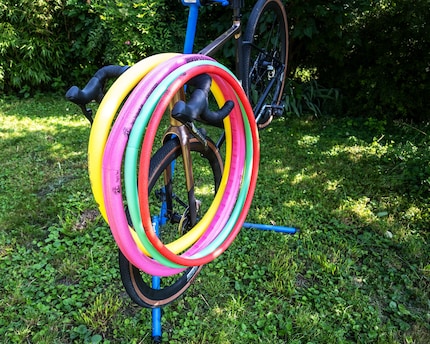
All hands on deck for the mounting process
Changing to tubeless tyres involves rim tape, a special valve and sealing fluid. On this occasion, we’ll be using products from Stan’s. In theory, mounting tubeless tyres can be done in a jiffy. In practice, however, these things have a will of their own – and it’s a struggle.
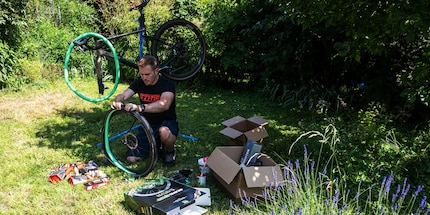
Seeing as I’m all thumbs, I ask the experts at Trail Supply, a company that sells Tire Noodles in Switzerland, for help. Stefan, the man supporting me with converting my gravel bike, starts things off by explaining how Tire Noodles work. The Noodles are inserted into the rim of the wheel along with the tubeless tyre. When you inflate the tyre, the foam Noodles contract. If air escapes, they expand again. This is beautifully demonstrated in the photos below:
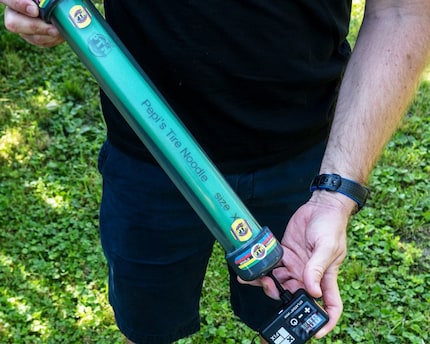
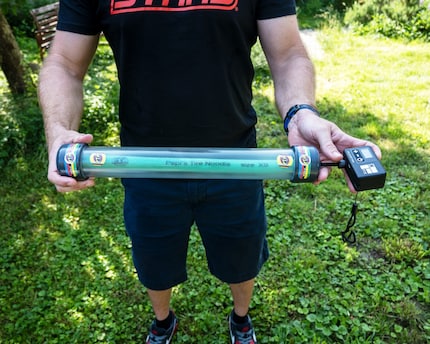
Tire Noodles are designed to prevent tyre damage and snake bites as well as protect your wheel rims. According to Stefan, they also revolutionise performance on lengthy enduro descents, downhill trails and endurance road rides. Tailored to particular applications, the Noodles supposedly minimise the risk of bike damage, significantly increase grip and make your ride much more comfortable.
If you get a flat, they supposedly allow you to ride home without even repairing it. All of this certainly sounds tempting. To find out whether the claims square up with reality, I’ll be putting the Noodles to the test over the next few weeks, then reporting on my experiences.

All’s well that ends well
First things first, we’ve got to mount the tyres. To do this, Stefan’s brought along a product from a manufacturer I’m unfamiliar with.
Prague-based brand Zleen makes tyres for everything from city bikes to MTBs. And of course, they cater to gravel bikes too. Today, we’re fitting the Wolf Pro gravel tyres measuring 42 millimetres wide.
They’re designed to offer good grip on all surfaces, from dry forest paths to gravel roads and muddy tracks, and make for a fast, smooth ride. But we’ll see about that. I’ll be using the next few weeks to review the tyres too.
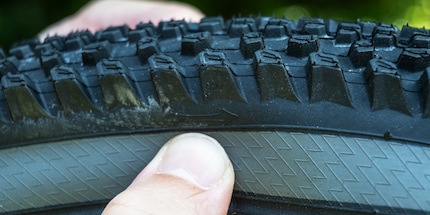
In a nutshell, here’s how converting a Gran Turismo GR X gravel bike from Bixs from tubed to tubeless goes:
- Take off the old tyres and take the tube out of the rim
- Tubeless-ready wheels come with rim tape
- If the wheels don’t have rim tape, stick on some suitable tubeless rim tape
- Insert valve (but be careful, you need special tubeless valves if using Tire Noodles)
- Mount new tyres to the rims, potentially with Tire Noodles
- Inflate until you hear a clanking sound (see video)
- Let the air back out and fill with approx. 60–80 millilitres of sealing fluid
- Inflate and turn the wheels in both directions to distribute the sealing fluid and seal the tyre and rim
Once you hear a clanking sound, the tyre should be sitting properly in the rim and be fully sealed. Should be fully sealed. In reality, you often need to take your bike out a few times before the sealant’s spread everywhere and all the leaks are sealed up. In my case, my rear tyre is still losing air after even a third short ride, and I have to keep pumping it back up. Mind you, the same thing happened with the last bike I converted to tubeless. It took two weeks for the rear wheel to seal up.
Fewer punctures, more messes
It can take a lot of time and frazzled nerves to get a new tyre positioned snugly on a rim. I’d recommending using soapy water on the sides of the tyre to make the rubber a little more pliable on the rim. Unfortunately, you’ll probably still need to use a tyre lever. This increases the likelihood that you’ll slip and scratch your lovely new carbon rims.
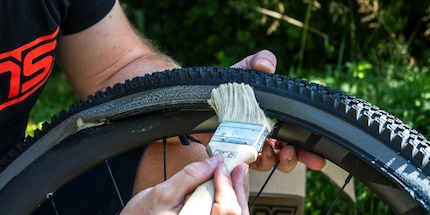
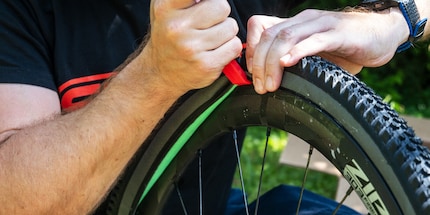
To finish off, sealing fluid is poured into the tyre. There are several way of doing this. It’s typically done via the valve, which involves taking out the valve core first, then adding the sealant directly from the bottle or using a special applicator.
The second method leaves much less mess on the rim than pouring the sealant from the bottle.
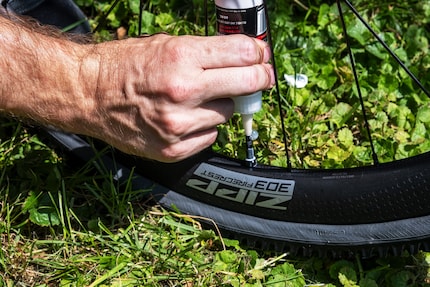
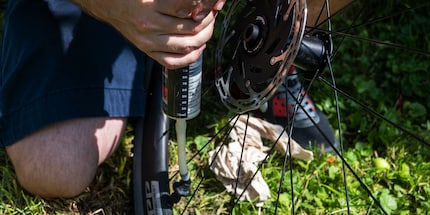
Which is best: tubed or tubeless?
To tube or not to tube, that is the question. But I don’t really have an answer for you. When I watch YouTube videos on converting from tubed to tubeless, it always looks like child’s play. «All you have to do is…» and hey presto, ten minutes later, you’ve got two tubeless tyres on your bike. My (admittedly limited) experience of retrofitting these tyres is different. It’s a faff, scratches your rims and the sealing fluid often makes a mess.
I’ve now seen the process through four times: I’ve watched it twice, done it once under supervision and once by myself. And every time, it was a bit of a hassle. Once the conversion’s over and done with, I’m quite happy to go tubeless. Though it has to be said, I’ve ridden two test bikes with tubed tyres over the last few months and never had a puncture.
You also have to top up tubeless tyres with sealant two to three times a year to ensure there’s always enough fluid to seal any holes. Tubeless tyres offer clear advantages in terms of speed, comfort, grip and puncture resistance. Weight-wise, the combination of tyre, Noodle and valve, weighing 568 grammes, is lighter than my old tubed tyre. Those tyres weigh 610 grammes, including the inner tube and valve.
But then there’s also the sealing liquid, which has a higher density than water. I don’t really feel like messing up my kitchen scales, so I’ll just calculate using a factor of 1.3. Sixty millilitres works out at around 80 grammes, which would be 648 grammes per wheel.
So that’s a little more weight, a scratch here, a splodge there, but less susceptibility to punctures and better performance. Is switching to tubeless worthwhile? Ultimately, that’s a decision everyone has to make for themselves.
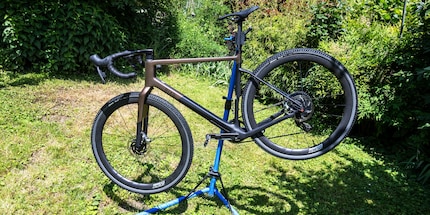
Tubeless vs. inner tube
Do you have an opinion on tubeless tyres compared to tubular tyres, and if so, what is it?
- I prefer tubed tyres - they’re simple and reliable.42%
- Tubeless is the better choice for me – fewer punctures and better performance.39%
- I’m still undecided/I’ve never tried tubeless tyres.20%
The competition has ended.
From radio journalist to product tester and storyteller, jogger to gravel bike novice and fitness enthusiast with barbells and dumbbells. I'm excited to see where the journey'll take me next.
This is a subjective opinion of the editorial team. It doesn't necessarily reflect the position of the company.
Show all